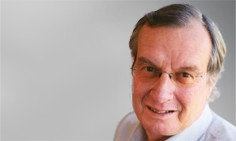GROWING up in Bourke, the first visiting specialists I can remember in the late 1960s and early 1970s were those the local GP, Dr Teddy Coolican prevailed upon to come out.
Barry Duffy from Prince of Wales Hospital, and Tom Reeve, Bernie Amos and John Steele, from Royal North Shore Hospital, started providing services mostly out of altruism and a concern for the health of Aboriginal and remote people.
Later this became more formalised when New South Wales Health established Rural Aerial Health Services, fondly known as Air Ambrose after its director Graham Ambrose. The most famous of the visiting specialists was Fred Hollows, who first came to Bourke in October 1971 and continued until his death in 1993.
Since then what have come to be known as “outreach services” have become widespread throughout Australia.
Some are provider driven, where the specialist has a particular interest in a town; some are organised by Local Health Districts to meet their clinical needs; some are organised on a statewide basis; and others locally by specialists visiting towns near to their base.
Some are well organised and administered, others are what are known as “seagulls” – they fly in, spread guano everywhere and then leave others to clean up the mess.
Since 2000 the Commonwealth Department of Health has funded outreach services across Australia, administered by some Rural Workforce Agencies (RWAs) and other state-wide organisations.
Commonwealth-funded outreach programs have adapted over time to meet changing community needs and now include the Rural Health Outreach Fund and the Medical Outreach Indigenous Chronic Disease Program, among others.
Originally confined to medical specialists, these programs now feature diverse service delivery models and multidisciplinary teams including allied health professionals and nurses. This flexibility allows outreach to be customised to the unique needs and characteristics of rural towns.
Outreach has proven to be a sustainable mechanism for providing rural communities with access to health services when there is rigorous planning, and the activities of visiting and local health practitioners are coordinated.
Recent discussion has focused on incentives as a way to sustain specialist outreach services. However, the key to a sustainable outreach service is its responsiveness to an identified need, integration with local services, clear referral pathway and follow-up systems and consistent monitoring and evaluation.
There is much goodwill amongst health practitioners from a range of disciplines wishing to provide outreach.
For the ones the RWAs administer, more than 1400 practitioners currently participate in the outreach programs funded by the Department of Health, and 250 315 occasions of service were delivered in 2014–15.
Outreach exists to fill service gaps in towns where a fulltime service wouldn’t be viable, existing local services are unable to meet demand or services are deemed to be more effective in an Aboriginal community controlled setting.
RWAs play a pivotal role in managing the equitable distribution of funds across each jurisdiction by engaging with local health organisations to identify and prioritise needs and deliver 2428 services to towns across NSW, Victoria, South Australia and Western Australia.
While funding helps to offset the explicit or opportunity costs associated with outreach, health practitioners continue to visit rural and Aboriginal communities primarily to be a part of increasing access to health services, improving health outcomes, the interesting medicine and diverse practice.
Succession planning data indicates the majority of health practitioners plan to continue outreach for years to come.
Outreach will continue to play an important role in improving access to health services where rural and Aboriginal communities have limited alternatives.
Sustainable services will continue to be flexible and responsive to identified needs, integrated with local services and carefully planned by organisations like RWAs that work closely with local partners to monitor changing needs.
Dr Ian Cameron is Chief Executive Officer of the NSW Rural Doctors Network. He writes on behalf of Ms Megan Cahill from Rural Workforce Agency Victoria, Ms Belinda Bailey from Rural Health West and Ms Lyn Poole from Rural Doctors Workforce Agency South Australia.

 more_vert
more_vert
Ian Cameron provides an excellent synopsis of the important and welcome developments in rural health outreach services particularly over the last 16 years. A large component of medical specialist outreach always has been and continues to be provided without any direct financial assistance. It is perhaps not surprising then that much of this activity has been concentrated in the most easily accessible rural areas closest to the metropolitan areas or in larger regional centres easily accessible by commercial airline services and with sufficient activity to make outreach services viable if not financially attractive. They have often been loss-leaders to shore up or expand referral bases into lucrative or professionally powerful tertiary services. It is also not surprising then that such activity has been not been patient focused, properly planned or coordinated across disciplines or health sectors, is not monitored or evaluated with regards to effectiveness or outcomes, and that smaller, more remote and indigenous communities remain significantly disadvantaged in access to care even today.
We require significant expansion of outreach funding through RWAs to realistically meet the rationally thought out access needs of all rural and remote communities, especially indigenous communities, with greater coordination, service planning and outreach workforce development, along with refinement and improvement of the GRIP scheme to better recognize continuity of service across multiple remoteness classification areas.
One hopes that the current extensive Medicare review will free up funds that can be directed to achieving some of these further improvements and objectives in further improving outreach services for rural residents.
Despite the interesting medicine, I wonder how easy it is to sustain outreach work without reasonable, longer-term funding and dedicated service coordinators, for all the providers operating beyond the Commowealth-funded programs?